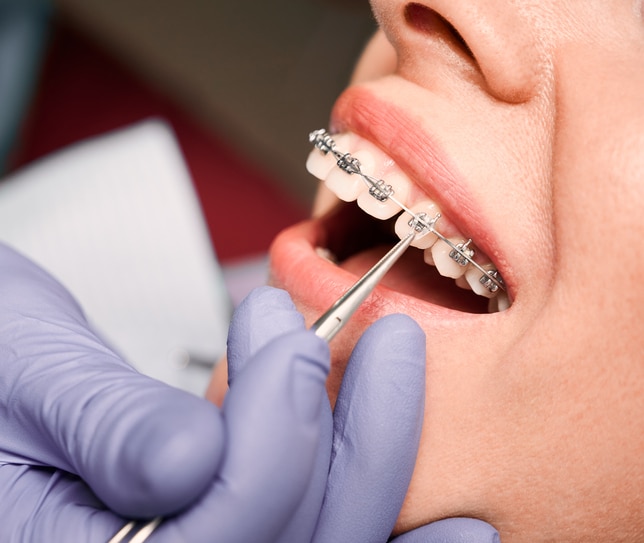How Cumming Orthodontics Can Transform Your Smile with Invisalign and Braces
How Cumming Orthodontics Can Transform Your Smile with Invisalign and Braces
Blog Article
Comprehensive Guide to Orthodontics Procedures for Remedying Dental Misalignments
Recognizing the intricacies of each treatment, including their devices, advantages, and prospective disadvantages, is crucial in making informed decisions concerning one's orthodontic treatment. As we navigate via the comprehensive guide to orthodontic procedures for remedying oral misalignments, the intricate details of each technique will certainly unravel, losing light on the course towards a harmonious and useful oral positioning.
Orthodontic Procedures Overview

Along with standard dental braces and clear aligners, orthodontists might also recommend other interventions like headgear, palatal expanders, or retainers to resolve details placement problems (orthodontist). These procedures are tailored to each client's distinct needs and might include a combination of therapies to attain the wanted results. Normal changes and tracking are vital components of orthodontic therapy to make sure development gets on track and to make any type of required modifications along the way. By going through orthodontic treatments, people can not only attain a straighter smile yet likewise improve their general dental health and function.
Traditional Braces: Just How They Work
When thinking about orthodontic therapies for oral imbalances, conventional braces stick out as a tried and true method for dealing with teeth positioning. Traditional dental braces include braces, cords, and bands that collaborate to use continuous pressure on the teeth, slowly moving them into the preferred placement. The brackets are attached to the teeth using a special adhesive, and the cables are threaded with the brackets. By readjusting the stress of the cables, orthodontists can regulate the instructions and force put on each tooth, guiding them right into correct placement gradually.
As pressure is applied to the teeth via the braces, the bone bordering the teeth is reshaped to support the new tooth settings. People will need normal adjustments at the orthodontist's office to make sure the dental braces proceed to use the correct pressure for efficient teeth motion.
Invisible Aligners: Cons and pros
Undetectable aligners provide a very discreet and hassle-free option to typical dental braces for correcting oral imbalances. These clear, personalized trays are essentially undetectable when put on, making them an enticing alternative for people looking for an extra aesthetically pleasing orthodontic therapy. One of the primary benefits of unseen aligners is their removability, enabling for easier upkeep of oral health contrasted to traditional dental braces. Patients can imp source remove the aligners before consuming or cleaning their teeth, reducing the risk of food getting stuck in the home appliance and streamlining the cleansing procedure.

Surgical Orthodontic Options
Surgical treatments in orthodontics present feasible options for dealing with complicated oral misalignments that may not be effectively fixed via conventional orthodontic treatments. While unnoticeable aligners and traditional braces can deal with lots of orthodontic concerns, certain situations call for surgical treatment to achieve optimum results. Surgical orthodontic choices are commonly advised for extreme malocclusions, considerable jaw discrepancies, and situations where the underlying bone structure needs modification to achieve proper webpage positioning.
One usual medical orthodontic procedure is orthognathic surgical procedure, which entails rearranging the jaws to remedy functional issues such as trouble speaking or eating. This surgery is often executed in partnership with an orthodontist who helps straighten the teeth prior to and after the treatment. Surgical orthodontics may likewise include treatments to subject affected teeth, eliminate excess periodontal cells, or improve the jawbone to create a more unified face profile.
Before considering surgical orthodontic alternatives, people go through a detailed examination to determine the necessity and potential advantages of such interventions. orthodontics. While surgical treatment may seem challenging, it can substantially improve both the feature and visual appeals of the smile in situations where traditional orthodontic therapies drop short
Retainers and Post-Treatment Treatment

Failure to comply with post-treatment treatment guidelines can result in relapse, where the teeth slowly move back towards their initial positions. Consistent retainer wear, good oral health, and normal oral exams are important for maintaining the results attained with orthodontic surgical treatment and guaranteeing the long-term stability of the dealt with dental placement.
Verdict
To conclude, orthodontic treatments use numerous choices for fixing dental imbalances. Traditional braces make use of metal brackets and wires to change teeth into proper placement. Undetectable aligners supply a more discreet alternative yet might not be suitable for all instances. Surgical orthodontic choices are available for more serious misalignments. Retainers are generally used post-treatment to keep the new placement. In general, orthodontic procedures can successfully enhance dental wellness and aesthetic look.
As we browse through the detailed overview to orthodontic procedures for remedying dental imbalances, the intricate details of each approach will unfold, dropping light on the course toward a functional and harmonious dental placement. - cumming invisalign
One of the most common orthodontic treatments is the usage of dental braces, which are composed of steel braces and cords that apply mild stress to progressively shift teeth into the preferred setting.When taking into consideration orthodontic treatments for dental misalignments, conventional dental braces stand out as a reliable approach for correcting teeth positioning. Additionally, undetectable aligners might not be ideal for intricate orthodontic issues that require more significant teeth movement, as they are usually recommended for mild to moderate cases. Retainers are customized orthodontic devices developed to hold teeth in their fixed settings after the completion of orthodontic treatment.
Report this page